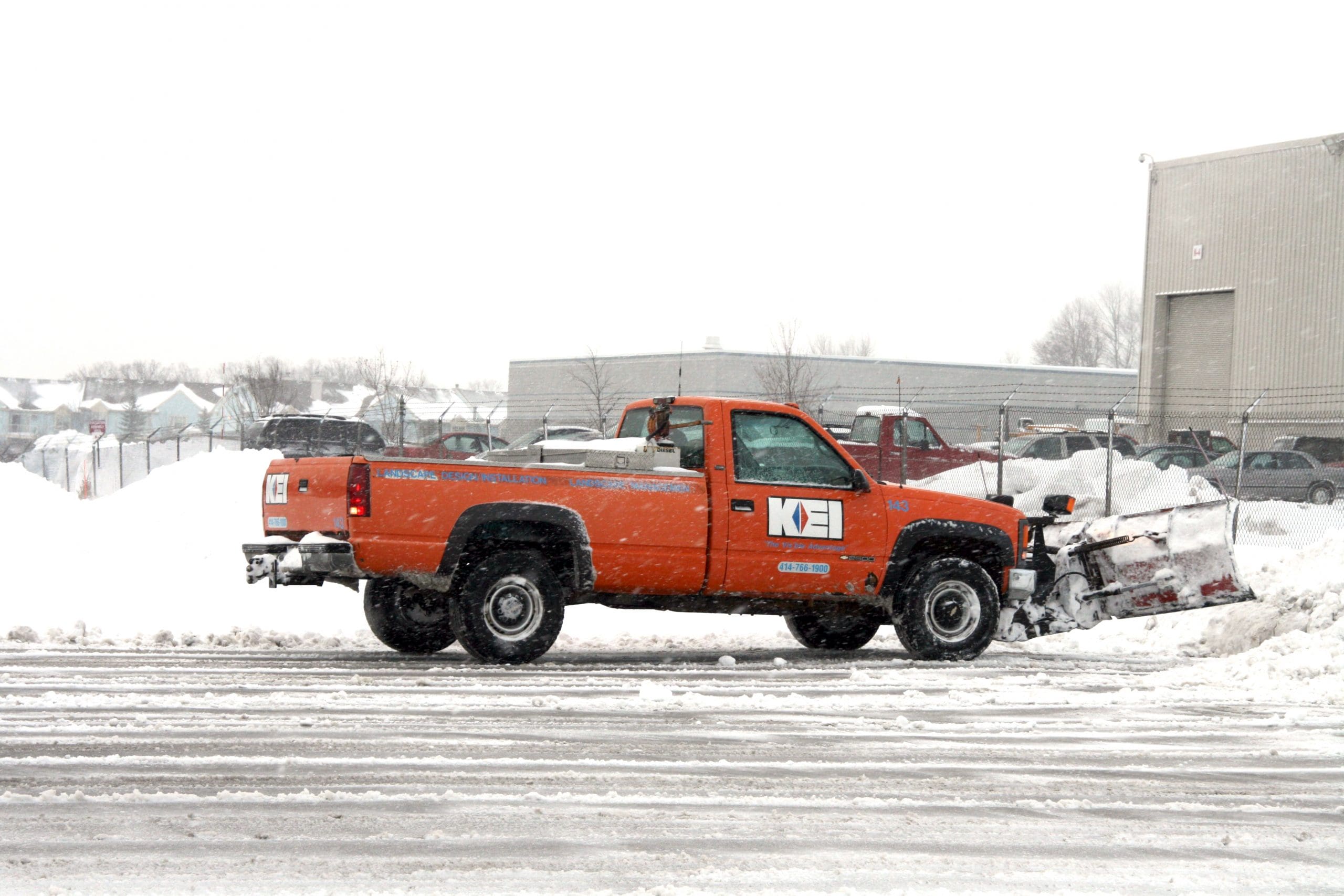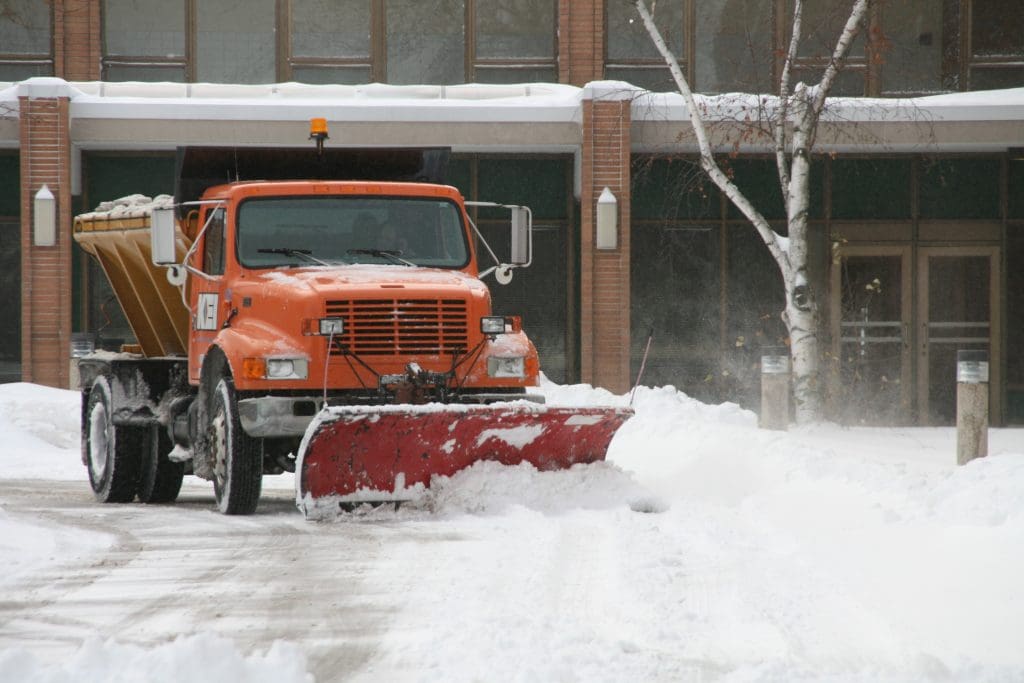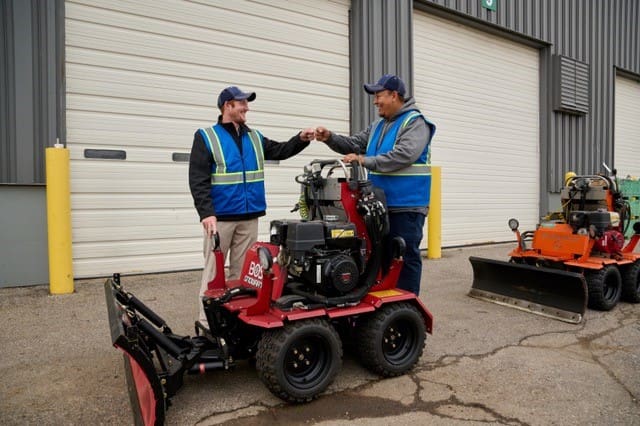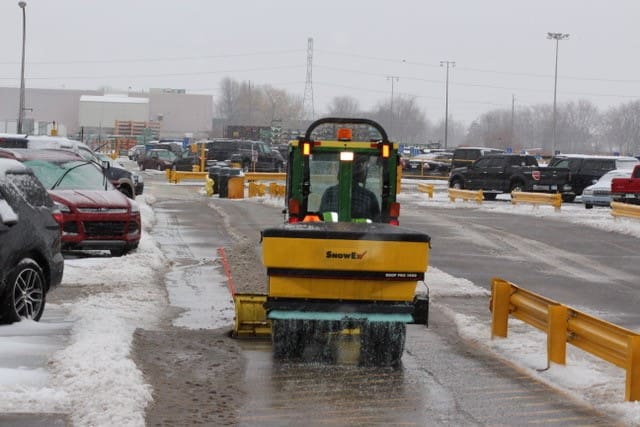
If you are in a market with consistent snowfall, you might have added snow removal services initially as a way to keep your crews on over the winter months. However, as the rest of your business grows, you might be looking for ways to take your snow side to the next level.
There are a number of challenges that can hold you back from growing your snow business, but one of the toughest is staffing. The on-call nature of snow servicing under difficult weather conditions makes it that much harder.
“The on-call part-time seasonal nature of these jobs doesn’t really work anymore,” says Mike Voories, chief operating officer of Brilar, based in Farmington Hills, Michigan. “Working our men and women for excruciating hours is a problem. Companies that aren’t using technology and modern equipment to make these jobs a little less manual labor and a little more appealing to the workforce are going to struggle to keep people and to constantly grow.”
Another issue is getting more equipment to handle the additional work.
“To grow beyond your current fleet capabilities requires more fleet,” Chris Kujawa, president of Kujawa Enterprises, Inc. (KEI), based in Oak Creek, Wisconsin. “That can be a sizable investment in a service vertical that may or may not provide a return on any given year. Rental expenses come with risk as well.”
Josh Flynn, CEO of Seabreeze Property Services, based in Portland, Maine, adds that stretching yourself too thin and making a bad impression from the beginning can be another setback.
“That may work for a year or so, but if the service suffers because you’re thin, you won’t grow because customers will come to know that as your service model,” Flynn says. “This includes pricing too cheaply and not being able to invest in your employees or your equipment. We ultimately sell reliability, and if your employees don’t show up and your equipment keeps breaking down, then you can’t fulfill that part of the deal.”
These three companies say they opt to serve the commercial snow and ice control market primarily. Flynn says it’s the best way to grow the snow removal side of their business. Voories stresses you need to think bigger when selling your services and price accordingly.
“You got to think of yourself almost like an insurance company, especially with commercial,” Voories says. “You’re providing a service that’s keeping people safe. You’re providing a service that is mitigating the property owner’s liability. When you look at it that way, charge accordingly.”
Ways to Maximize Efficiency and Scale Up
There is no one perfect way to help scale up your snow business.

Since KEI started doing snow and ice management in 1964, a number of innovations have been implemented at the company.
“In the old days, plows hung off of large dump trucks,” Kujawa says. “They were straight. To angle them, you had to drive/push one side into a pile and drop a pin back into a radius flange. Prehistoric! Plows now angle instantly with hydraulics and hand-held push button controls. They invert into “V” scoops, side wing blades, etc.”
He says while box pushers are standard now, they were a massive efficiency boost when first introduced. Flynn says they don’t utilize a lot of fancy pushers or equipment, but their sidewalk machines, Ventrac SSVs and 4500, have allowed them to cover substantially more ground than hand shoveling.
“Getting the right blend of equipment for the right sites is incredibly important as the equipment is expensive and you don’t have a lot of time to make sure the site is clear and safe,” Flynn says.
Kujawa says that GPS has made a huge difference in reporting accuracy and accountability. Voories adds that the ability to measure properties online has sped things up.
Brilar works with a professional meteorologist and Neoweather, a weather forecasting company. Voories says it’s been a big help for making critical weather decisions.
Flynn says they have utilized local subcontractors to aid with scaling, but they’ve worked to build out a full season worth of grounds work so their staff can have 12-month employment. Kujawa cautions that all of their service-related difficulties were a result of subcontractor issues.
“In our opinion, scaling up while maintaining quality and your sanity can be difficult,” Kujawa says. “You own only so many trucks and/or loaders. You can rent or lease more equipment as long as you can put reliable people behind the wheel.”
Voories says that they’ve eliminated route work by defining their ideal client and property type. He says this helps reduce employee burnout and allows them to provide better service to their clients.
“We’ve got a pretty extensive qualifying process that I designed,” Voories says. “If a client checks all those boxes, the odds of us being successful on that property or in that relationship are pretty high.”
He says Brilar is really able to shine when working on large sites where the client is focused on slip and fall liability.
“If we’re on a big site and we have three people there and a loader goes down or a truck breaks down, we’re still working on the site,” Voories says. “If we’re doing route work and a truck breaks down, the people at the end of that route might not see service for hours and hours.”
Retaining Staff
Since having enough people is one of the main challenges of growing your snow services, one major aspect you have to manage is retention. Voories says this is something they still struggle with but are always working to become better at. He says Brilar is striving to make these difficult jobs more appealing with tools that ease the burden. They also make sure their team has full-time work, whether it snows or not.

“Last year, we got most of our workforce on full-time year-round work,” Voories says. “The goal this year is to not have anyone laid off or anyone on-call only. Despite the fancy equipment and all that stuff, we are in the people business. The answer is to be more of a premier employer and have places where people want to work and that’s what we’ve been doing and what we’re going to keep trying to do a better job of.”
“Snow employees are the most difficult to find because of the sporadic nature of the work and all the elements that need to be fought during the actual event, yet we’ve been able to retain most of our employees each season,” Flynn says.
Flynn says they initiated a guaranteed 40-hour paycheck program last year that ensures they are paid regardless of the hours worked. When they clock 60, 70 or 80 hours a week, they receive full overtime benefits.
“It creates strong financial stability for our crews and makes us more reliable to our customers,” Flynn says. “We still have turnover just like everyone else, but it’s manageable and our average tenure and average headcount continue to rise each season.”
Kujawa says they try to keep their top hourly people busy with snow work or prepping for the next season. They also provide an hourly snow bonus that accrues during the winter.
“Employees earn generous, extra hourly ‘snow pay’ dollars that accrue during the winter,” Kujawa says. “That bonus is then paid out at the end of the winter as long as you are still with us and you’ve lived up to your commitment to be available when called upon. We also provide subsidies for winter gear like coats, boots, etc. as needed.”
Ways to Stand Out
All three companies say almost all of their snow and ice control services business comes from earned word-of-mouth. KEI does no marketing for their snow services.
“Our commitment to service and reliability has earned us the luxury of being somewhat discerning in who we work with,” Kujawa says. “We actually leverage our service density to solidify even more density.”
KEI’s density is one of the ways they stand out from other contractors as they promote a sense of community among their clients by letting them know they are always close by.

“At any given time, in a pinch, we have resources close by and can respond to any situation,” Kujawa says. “‘Today it’s your emergency. Tomorrow it’s your neighbor’s dilemma. Either way, we are all in this together.’ They appreciate that sense of community we promote whereby KEI is the common thread looking out for the whole neighborhood! We let them all know that we are committing people, equipment and management resources to the whole area, to the greater collective good.”
Flynn adds that density also maximizes equipment utilization and minimizes driving between sites.
Meanwhile, Seabreeze and Brilar will also reach out to clients that they know are a good fit for them. Voories says they will often start with one site with a client and now have ten sites with them.
“Snow, to be fair, is quite a bit easier to sell than landscaping and summer services,” Voories says. “It’s not easier to perform, but it is easier to sell, so focusing on sales, having a full-time sales team and not people with other responsibilities has helped us grow.”
Flynn says their service model is to make snow removal as stress-free as possible by overcommunicating and holding themselves to a high standard.
“Overall, being consistent in our delivery and performance has allowed us to be one of the most sought-after companies for our services,” Flynn says. “Customers know we will show up and do the job that’s asked of us and they won’t have to closely manage us to know the job is getting done right.”
This article was published in the Sept/Oct issue of the magazine. To read more stories from The Edge magazine, click here to subscribe to the digital edition.

